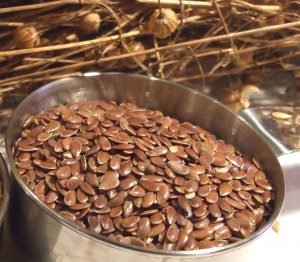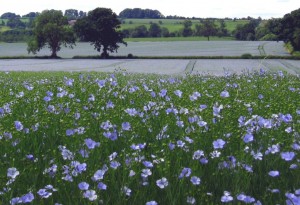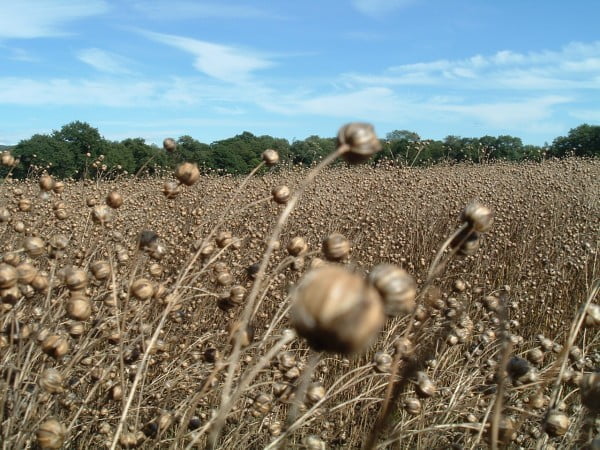Biblical, Fabric & fibre, Faxipedia, Flaxfarm, Food, Health, History, Literature, Terminology
Linseed: flax and its other names
Linum usitatissimum

Linseed was one of the first plants cultivated by man at least as early as 10,000 BC and has been widely grown throughout the temperate zones. Consequently if has developed a lot of different names.
Its scientific name is Linum usitatissimum, meaning “the most useful linum” referring to its uses from food, medicine, beauty products, heating and lighting oil, paint, flooring, fabric, preservative and so on.
Linum: linseed
“Linum”, comes from “lin” which comes from ancient Greek; the same route was also used in Celtic. The word lin probably referred to the linseed plant long before it was used to mean thread or line, from which words like linear, lineage, fishing line and lino came.
Flax
In the UK, “flax” traditionally has referred to the fibre in the stems and the crop grown for its stems which are used to make linen, canvas, ropes and other fabrics. The word “Flax” comes from an ancient Germanic language. Flax, as grown for the fibre/thread is a variety of Linum usitatissimum Seeds leftover from processing the flax stems for linen thread are often call linseed but are not optimally harvested so usually go into cattle feed or industry.
Other names

Linum usitatissimum
Other names for linseed around the world often have “lin” as a prefix:
- Ama
- Annual Flax – Garden Plant
- Chih Ma – Chinese
- Common Flax
- Cultivated Flax
- Flax – USA
- Hørfrø – Danish
- Hu Ma
- Keten tohumu – Turkish
- Leinsamen – German
- Graine de lin – French
- Linarósporos – Greek
- Linaza – Spanish
- Linen – Fabric made from the stems of the palnt
- Linfrö – Swedish
- Lino – flooring made from linseed oil
- Linseed – UK
- Lynsaad – Afrikaans
- Lijnzaad – Dutch
- Pashtan
- Semi di lino – Italian

